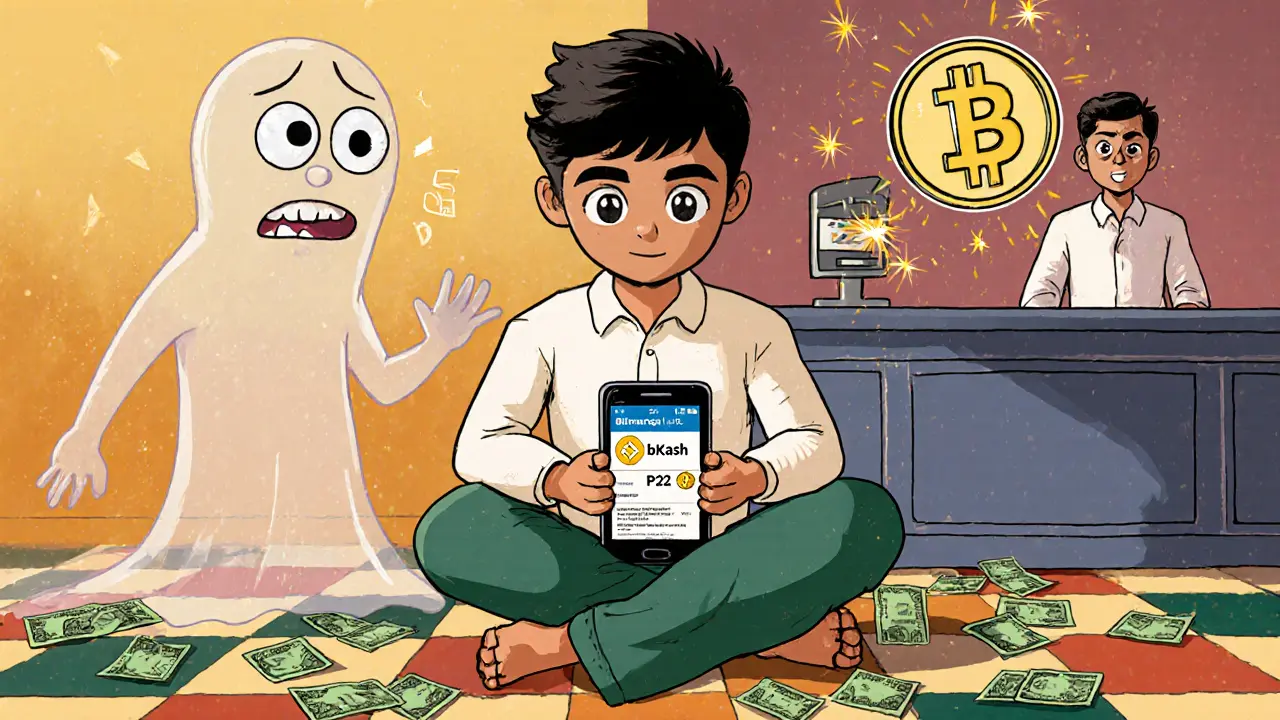Binance P2P: How It Works, Risks, and What Users Really Experience
When you use Binance P2P, a peer-to-peer trading platform built into the Binance app that lets users buy and sell crypto directly with each other using local fiat currencies. Also known as peer-to-peer crypto trading, it removes intermediaries and lets you trade with anyone nearby who has the cash you need. Unlike traditional exchanges where you buy from a company, Binance P2P connects you to real people—someone in Nigeria sending you naira, a trader in Russia paying in rubles, or a student in Brazil using PIX. This model thrives where banks block crypto purchases or where local payment methods are faster than bank wires.
What makes Binance P2P different is how it handles trust. The platform holds your crypto in escrow until the seller confirms they got paid. That’s a big deal—no more sending money to a stranger and hoping they send the coins. But it’s not foolproof. Scammers sometimes use fake payment screenshots or pressure you to release crypto early. Users in countries like Russia, where traditional exchanges are restricted, rely on Binance P2P to get crypto, but they also report cases where buyers disappeared after sending money. That’s why checking seller ratings, reading comments, and never skipping the escrow step matters more than the price you’re offered.
Binance P2P isn’t just about buying Bitcoin. It supports dozens of coins and dozens of payment methods—bank transfer, PayPal, Cash App, even gift cards. You’ll find sellers who accept fiat currencies, government-issued money like USD, EUR, RUB, or NGN used to buy crypto from over 100 countries. But the real power comes from flexibility. If you’re in a region where banks freeze crypto-related transactions, Binance P2P lets you bypass them using local payment apps most people already use. It’s not perfect—fees vary, rates change hourly, and disputes can take days—but it’s often the only way to get crypto in places with tight financial controls.
What you’ll find in the posts below are real stories from people who’ve used Binance P2P, not just theory. Some bought crypto with rubles during banking shutdowns. Others got burned by fake payment proofs. There are reviews of platforms like TaurusEX and Coinquista that confused users into thinking they were safe. You’ll see how airdrops like WorldShards SHARDS and FEAR token failed because people trusted hype over verification. And you’ll learn why platforms like Bitstamp and KoinBX are still trusted by cautious traders—even when they don’t offer P2P. This isn’t a guide to getting rich. It’s a guide to not getting ripped off when you’re trading crypto with real people, real money, and no safety net beyond the app you’re using.
P2P Crypto Trading in Bangladesh: How Peer-to-Peer Methods Work Despite the Ban
by Johnathan DeCovic Nov 5 2025 15 CryptocurrencyDespite being illegal, P2P crypto trading thrives in Bangladesh using bKash and Nagad. Learn how millions bypass the ban, the risks involved, and the most trusted platforms for buying and selling crypto.
READ MORE
